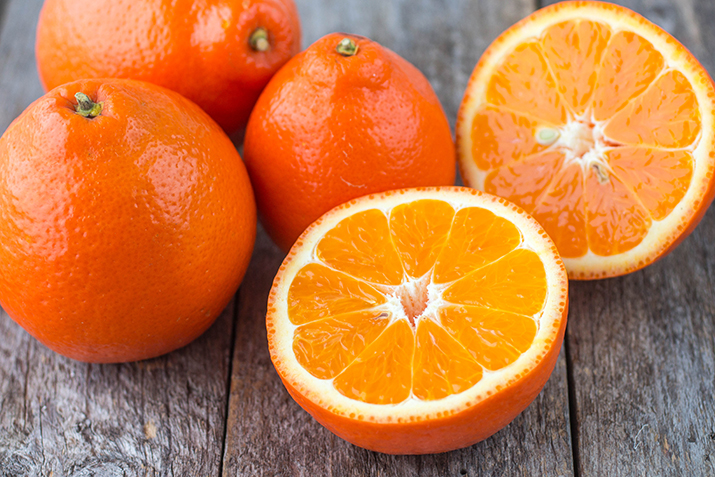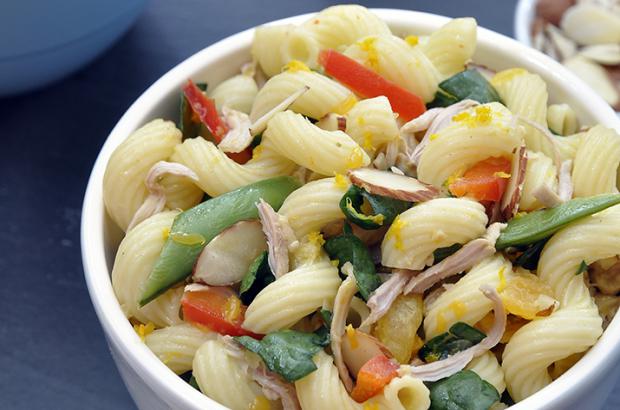Article
Minneola Tangelo

What makes a tangelo different from a tangerine, mandarin, or an orange? They are a hybrid fruit, made from the natural genetic crossing of two different fruits by a horticulturalist. Tangelos are a cross between a Dancy tangerine and an ancestral variety of grapefruit called pomelo. Their name borrows a little from each, tang-elo. The sweet, intense flavor of tangerines comes through in a tangelo but is tempered by the tart and tangy, flowery taste of grapefruit. This results in a fruit that is sweet-tart, exotic in flavor and extremely juicy.
There are several popular varieties of tangelo, including the Honeybell, Orlando, and Minneola. The Minneola tangelo specifically is a cross between a Dancy tangerine and a Duncan grapefruit, making their grapefruit characteristics stronger than other varieties. Hybridized and released by the USDA Horticultural Research Station in Orlando, Florida in 1931, the fruit is named after the small nearby town of Minneola, Florida. It remains a common fruit in that region of the U.S. and has grown in popularity to the point where it can be found seasonally all over the country.
Minneola’s nutritional profile is similar to that of other citrus. Like oranges, they are an excellent source of vitamin C, folate and potassium. Although all citrus is seasonal and generally abundant from late fall to spring, tangelos are highly seasonal and typically available from December through March. For those in the know, this makes them a sought-after item similar to clementine mandarins or Ruby Red grapefruits.
Seedless and easy to peel, Minneolas make a good choice for lunchboxes or snacks on-the-go; eating them fresh out-of-hand is the best way to appreciate their unique flavor. In the kitchen, their sweet and tangy profile substitutes well in recipes that call for oranges, grapefruits, even lemons (as in baked goods or vinaigrettes). Add peeled sections of Minneola to green, leafy salads for a tender, juicy bite. Combine slices of different varieties of in-season citrus like pink grapefruits, orange tangelos, and crimson blood oranges to make a beautiful citrus plate or fruit salad. Minneola tangelos can be used to make a delicious salsa for fish and seafood in place of pineapple or mango.
You can also juice tangelos and use their unique flavor to add a sophisticated twist to beverages and cocktails where you might normally use orange juice. Make an easy party-worthy Tangelo-Ginger punch by mixing tangelo juice in equal parts with non-alcoholic sparkling apple cider, grated, pressed fresh ginger juice (or bottled ginger juice), and lots of sliced tangelo rings. When cooking, don’t forget the zest: just a pinch of Minneola zest will add an exotic element to simple orange juice-based sauces for chicken, fish, or tofu. Tangelo zest and juice make a delicious contribution to this Tangelo Chicken Pasta Salad.
When shopping for Minneolas, look for a bright reddish-orange fruit about the size of a baseball or slightly larger, with a small, characteristic bulb protruding on the stem end. Select fruit that is heavy for its size, with soft, pliable skin. Citrus fruits with a stiff or firm peel are sometimes less juicy, or “dry,” inside. A fresh Minneola should last in your fruit bowl for a week to ten days, but should be refrigerated if kept longer (up to 3-4 weeks). As with all citrus, the fresher it is the sweeter and more lively the flavor, so purchase just what you can use, and purchase often! These seasonal gems are here and gone.












